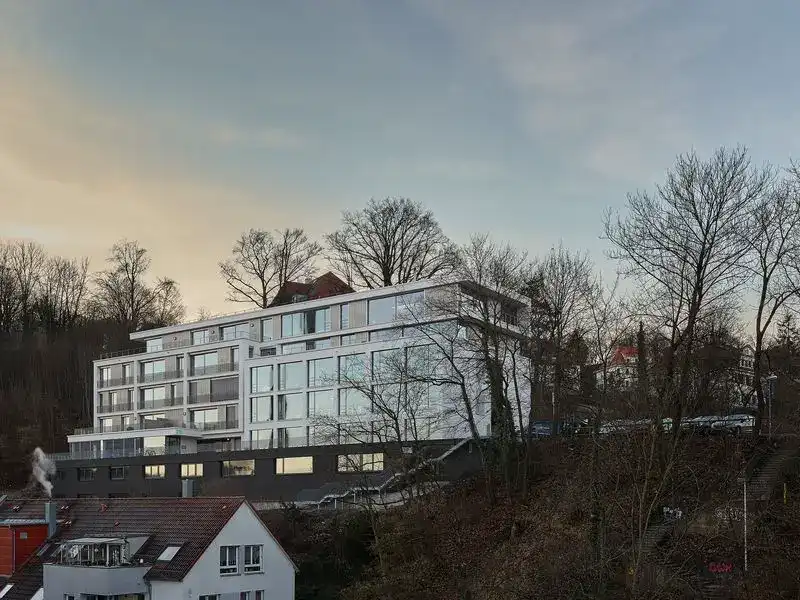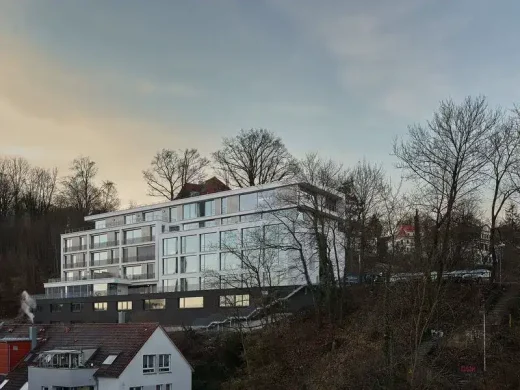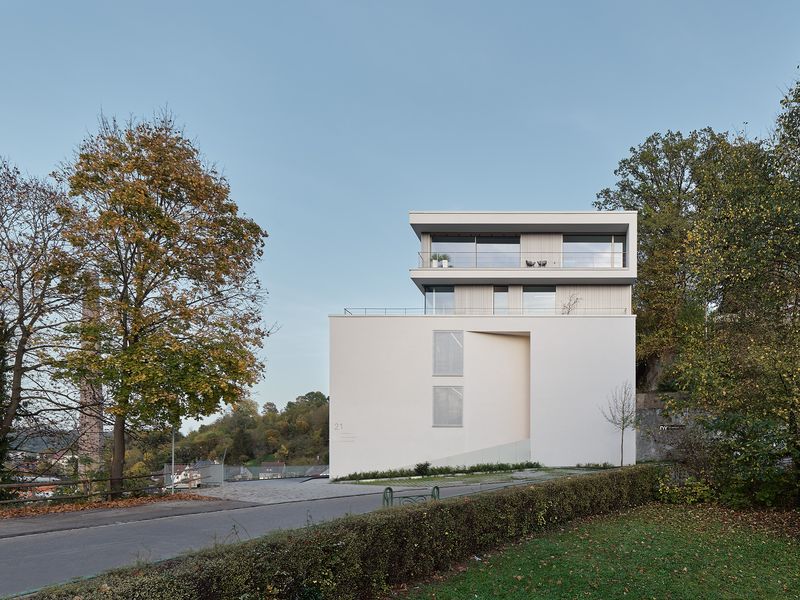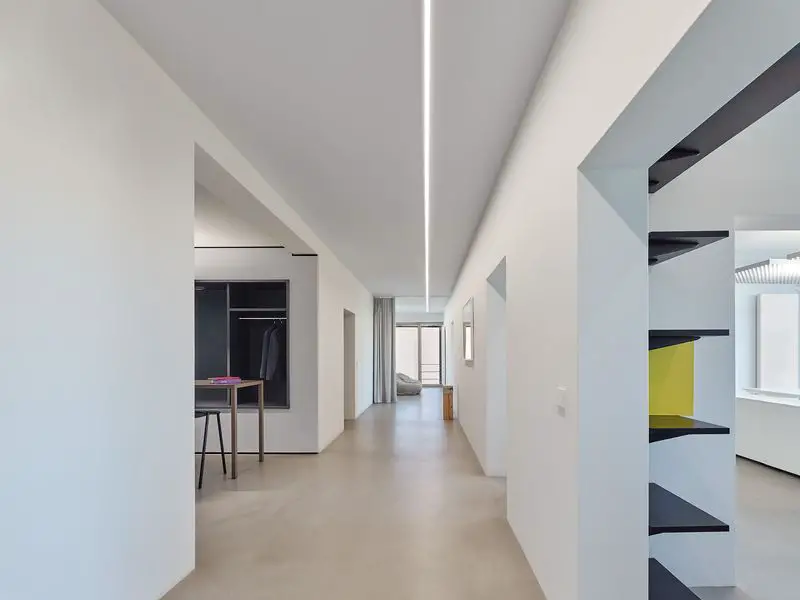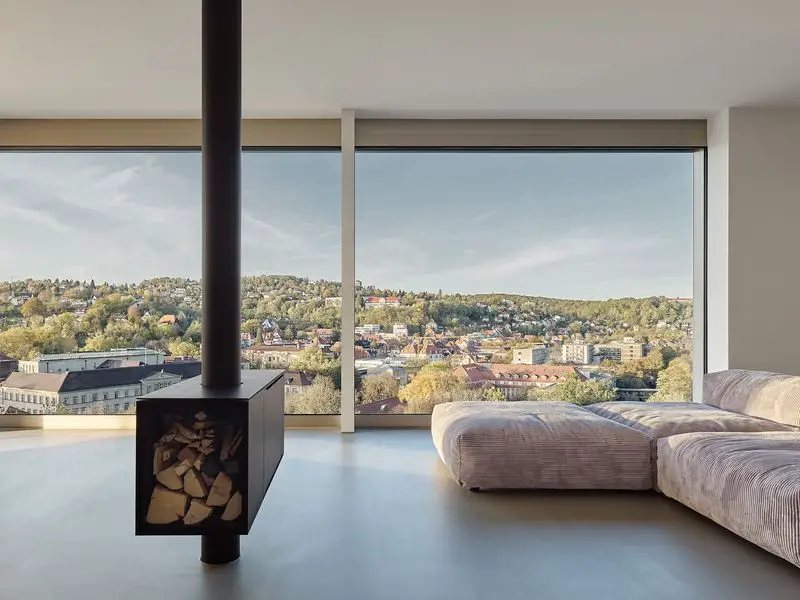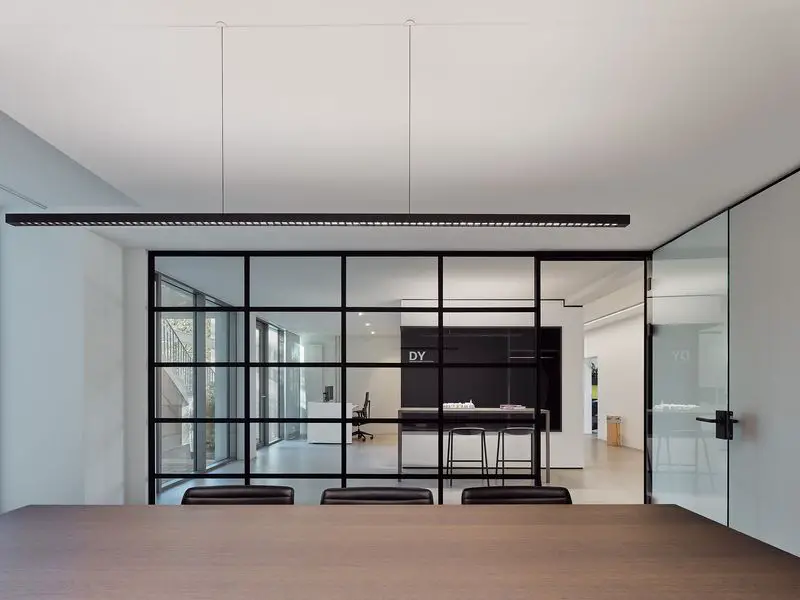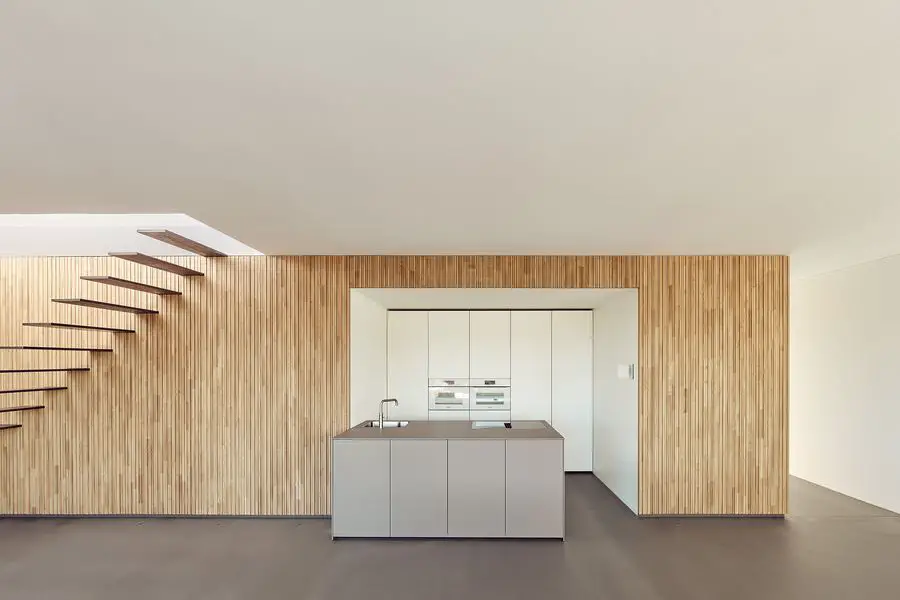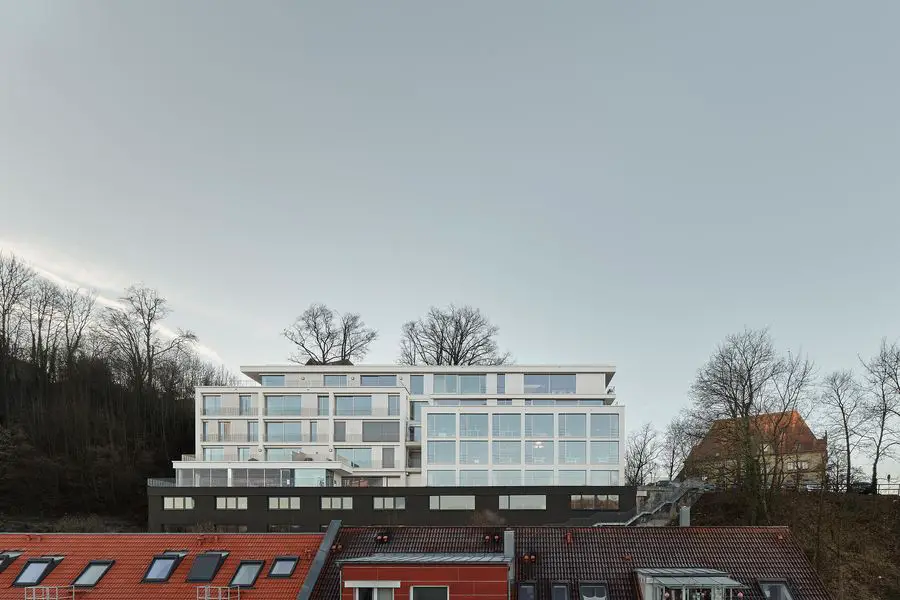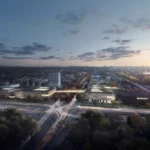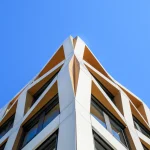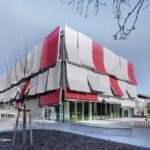Doblerstraße 21 Project Tübingen, Modern Baden-Württemberg building, southwest German eco property, Architecture images
Doblerstraße 21 Project in Tübingen
31 October 2023
Design: Danner Yildiz Architekten
Location: Tübingen, Baden-Württemberg, southwest Germany
Photos by Zooey Braun
Doblerstraße 21 Project, Germany
In line with sustainable infill development, the conversion and expansion of a former administrative building in Tübingen’s city center resulted in the creation of ten apartments and 1,490 m² of office space. The building’s structure from the 1960s, along with the embodied energy stored within, was largely preserved. The desired integration of living and working, close to the city center with short commuting distances, was achieved as per the city administration’s objectives.
The building, perched above the university grounds, had remained vacant for extended periods following administrative restructurings. It had become significantly in need of renovation and was eventually set to be replaced by a new construction after a phase of temporary use by artists as an “Art Office” with studio spaces. Architects Florian Danner, Abdul Yildiz, and their collaborator, lighting designer Jens Maier, acquired the building in 2014. Initially, they converted it into a refugee shelter using cost-effective methods. The interim usage period provided an opportunity to adapt the building rights through a project and development plan. After the approval for extension and expansion, the building once again demonstrated how its robust construction and clear structure were exceptionally suitable for vastly different uses.
The reinforced concrete skeleton was restored to its shell level. To create bright, expansive workspaces for the developers’ planning offices (Danner Yildiz Architects and Maierlighting), several partition walls and precast parapets were removed. Floor-to-ceiling glazing now ensures maximum uniform north light and picturesque views of Tübingen’s city center. The north orientation of the entire building turns out to be advantageous, ensuring that the rooms remain shielded from direct sunlight during the long summer months, eliminating the need for elaborate shading systems and cooling technology that obstruct the view.
The 1960s structure easily accommodated the addition of two lightweight residential floors. Prefabrication advantages were utilized: within ten days, the shell construction with a steel frame and integrated solid wood ceilings was completed.
The two added floors are notably set back from the existing facade plane, creating space for rooftop terraces and reducing the visual bulk of the entire building when viewed from a distance. On the mountain side, the residential levels extend beyond the existing structure, supported by a reinforced concrete grid matching the dimensions of the original building, creating a distinct space for the open circulation zone. Walking on the freely suspended stair runs, bridges, and platforms, the proximity to vegetation and the exposed rock creates an experience of nature and weather. The contrast between solid materials and the openness of the building structure engages the senses, as does experiencing all three spatial dimensions in motion.
Towards the street, the significance of the entrance is architecturally accentuated by a diagonally cut building joint. It provides barrier-free access via a ramp to the covered, greened inner courtyard. Despite the almost complete retention of the existing structure, the building is barely recognizable. With its new appearance, it challenges visual habits, evokes curiosity, and surprises; it has transformed from an ordinary administrative building into an architecture with an entirely new identity. The architectural structure and the property underwent a veritable upcycling through aesthetic enhancement, meaningful continuation, and multiple uses.
Urbanistically, the project seamlessly integrates with the environment of five-story residential buildings. It fills a previously underutilized urban gap by utilizing the plot depth for a second building wing, compactly and equally energy-efficient. This additional wing houses seven spacious apartments, an underground garage, and another commercial space for the University of Tübingen.
The energy concept incorporates high-quality full thermal insulation, concealing the existing structure and achieving KfW 40 standard in the residential floors. Heating is supplied through the district heating of Stadtwerke Tübingen, derived from combined heat and power and renewable energies, scoring well with a very good primary energy factor and low pollutant emissions.
Home design
The apartments occupied by the developers themselves each have direct access to the rooftop area, which offers unexpected oasis-like green terraces and outdoor kitchens amidst the city.
Some of the salvaged materials, such as soapstone slabs and glass bricks, were reused in the interior design, where their incorporation into one of the private bathrooms adds even more value, achieving a form of upcycling, much like the registration shelves, now serving as wardrobes in the dressing room.
The top residential unit is a one-room apartment. Within its spacious area stands a wood-clad piece of furniture housing all functions and technical building equipment: ventilation and sound systems, electrical and heating distribution with corresponding control panels, abundant storage space, numerous drawers, sliding doors to separate areas, flaps, and doors leading to the toilet, wardrobe, or steam bath, for instance.
Uninterrupted by technical applications, the living space flows around this piece of furniture, emitting a serene atmosphere. The cladding with a sound-absorbing acoustic wall made of oak wood slats (Lignotrend brand) also contributes to a pleasant calmness.
In this apartment, one can observe the relevance of acoustics and lighting alongside room proportion and materiality for a pleasant spatial experience. As architects, we often face increasingly complex legal and technical requirements, risking a loss of focus on these essential elements. Maierlighting has consistently designed the lighting so that the light sources are barely noticeable, placing the emphasis not on the object being illuminated but on the light itself. This accentuates the minimalist appearance and tranquility of the spaces.
Doblerstraße 21 Project in Tübingen, Germany – Building Information
Architects: Danner Yildiz Architektenhttps://dy-architekten.de/projekte/
Photography: Zooey Braun
Doblerstraße 21 Project, Tübingen Germany images / information received 311023
Location: Tübingen, Germany
Architecture in southwest Germany
Southwest Germany Architecture
Multi-Family House, Aichwald, Baden-Württemberg
Design: holzerarchitekten
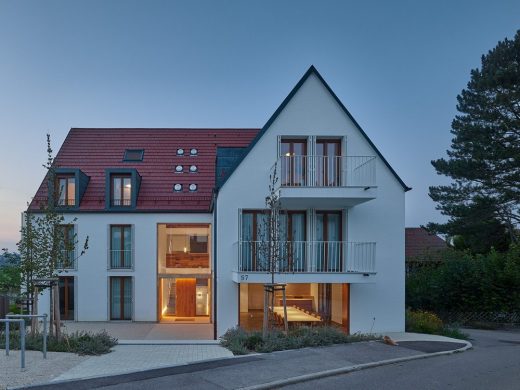
photo : Zooey Braun, Stuttgart
House in Aichwald Baden-Wurttemberg
House am Oberen Berg
Architect: Alexander Brenner Architekten
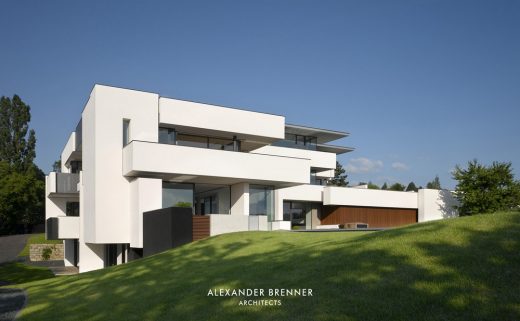
photo : Zooey Braun, Stuttgart
House am Oberen Berg
Renovation and extension of a semi-detached Wohnhaus
Architects: Holzer Architekten
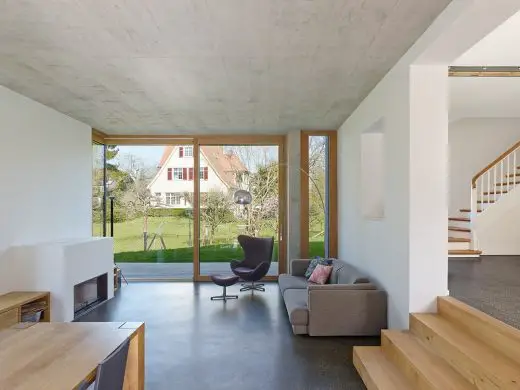
photo : Zooey Braun
Wohnhaus in Stuttgart
German Buildings
German Architecture
German Architecture Designs – chronological list
New German house : Dupli.Casa – House near Ludwigsburg
Comments / photos for the House L49, Tübingen Germany building design by METARAUM Architects page welcome

